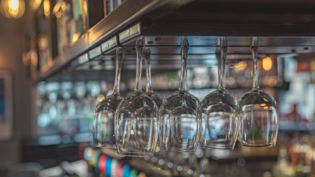
As a small business owner, slatwall panels are an important part of your store layout design. The integration process is straightforward and in combination with other wall accessories, it ensures a more streamlined shop display.
However, during the design stage, emphasis has to be placed on using the right paneling for your specific product types, product weight as well as expected foot traffic. This is important if you are to enjoy the excellent benefits of a properly designed shop display without the risk of product damage.
Here are 5 tips to help you make the right decision with your slatwall paneling.
1. Holding Weight
An unsupported slatwall panel has no insert, laminate strip, Colourgroove or plastic channel in the groove. “If an MDF is used to make a slatwall panel, it will be able to support up to 15 pounds per bracket, while those with metal reinforcements support as much as 60 pounds per bracket,” says Lukas Nell at Slatwall Accessories.“ We also advise business owners that receive heavy footfall to use reinforced slatwall as that is the only way they can deploy hangrail applications.”
If your slatwall didn’t come with metal inserts and you think you now need them, they can be added. Just ensure there’s an opening on one side where it can slide in. For example, if you don’t have metal inserts, there will be a load center 6 inches from the wall when a 12-inch deep shelf has an item on it. Hardware shouldn’t be more than 12 inches out from the wall and 12 inches apart. A 4-foot shelf should have 2 brackets in the middle and on both ends, making it 4. If you cannot afford the inserts, you can use wide slot spacing between the groove.
2. Solving a Down-slanted Faceout Problem
A lot of stress is put on the upper lip of the groove when the end of the waterfall carries all the weight. This leads to waterfall brackets or the Faceouts slanting down. To solve this, ensure you put only small number of items on the waterfall, and space them as much as possible.
3. Can a Plastic Channel Hold Enough Weight?
You can find a range of plastic channels with different thicknesses. So depending on the type of items and how much they weigh, you can decide which one you can add to your panel. Plastic channels don’t add much weight to the panel.
4. Is a Low Laminate Pressure Panel Stronger than a High Pressure Laminate Panel?
The strength of the slatwall is not affected by the low pressure laminate and the high pressure laminate. This is because both of them actually go on the face of the panel. What you should be more concerned about is what goes in the groove, because the strength of the panel isn’t really determined by what is on the face.
5. What to do During a Breakout even if you have two panels on top of each other
The edges of a panel are its weakest parts. Overloading a single groove leads to breakouts. Worse still, loading a groove that doesn’t have metal inserts in the area where two panels meet can also cause a breakout.
Some people look for how to make certain grooves have metal inserts and some have none. This isn’t quite ideal. Apart from the fact that some special machines would he needed to do this, you also have to be sure that heavy items will not be placed on the groove that has no metal inserts.
Breakouts randomly happen. You may have taken all necessary procedures to ensure that your slatwall is never overloaded, but a lot of unforeseen circumstances can still occur. Someone’s bag strap can get caught in the peg hook or a customer may lean too hard on the panel, applying pressure to it. This causes a breakout. Your best bet, therefore, is to avoid damage to your products from the onset by choosing the right slatwall paneling setup as well as the right accessories.
4093 Views












